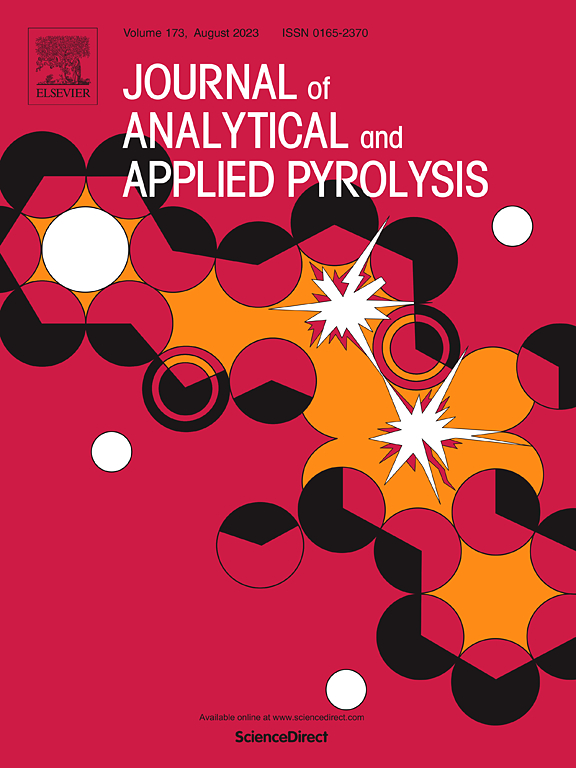Adsorption of dibenzofuran by modified biochar derived from microwave gasification: Impact factors and adsorption mechanism
IF 5.8
2区 化学
Q1 CHEMISTRY, ANALYTICAL
引用次数: 0
Abstract
Dioxins, emanating from the waste incineration, constitutes an organic pollutant that poses considerable risks to the human health and environment. In this study, the corn straw char (CSC) and oak char (OC) derived from the electric heating or microwave gasification, and the coconut-shell activated carbon (AC) are employed as absorbents for the adsorption of dibenzofuran (DBF, dioxins model compound). Characterization techniques, including BET, X-ray CT, SEM-EDS, FTIR, and XPS, are performed to identify the DBF adsorption mechanism on the biochar. The results show that the biochar prepared by the microwave gasification has a more well-developed pore structure than that of the electric heating gasification. The higher porosity (16.94 %) and lower mineral content (1.75 %) are responsible for the effective adsorption of DBF onto AC. The adsorption capacity of CSC is proportional to the modified concentration of KOH. It is mainly ascribed to the decrement of carboxyl and lactone groups and the enhancement of alkaline functional groups on the biochar surface, which augments the hydrophobicity and π–π electron donor–acceptor (EDA) interaction. Instead, DBF adsorption capacity on the biochar is adversely affected by the HNO3 modification. For all biochar samples, the corresponding maximum adsorption ratios are AC (87.11 %) > KOH-modified CSC (77.14 %) > unmodified CSC (49.11 %) > unmodified OC (39.70 %) > HNO3-modified CSC (36.09 %). The adsorption mechanisms of DBF on the gasified biochar encompass the pore filling, hydrophobicity, and π–π EDA interaction. A desirable adsorption capacity of DBF on the biochar prepared by the microwave gasification is attainable through augmenting the specific surface area while diminishing the oxygen-containing groups of the surface simultaneously.
微波气化产生的改性生物炭对二苯并呋喃的吸附:影响因素和吸附机理
垃圾焚烧过程中产生的二恶英是一种有机污染物,对人类健康和环境造成了相当大的危害。本研究采用电加热或微波气化产生的玉米秸秆炭(CSC)和橡木炭(OC)以及椰壳活性炭(AC)作为吸附二苯并呋喃(DBF,二恶英模型化合物)的吸附剂。通过 BET、X 射线 CT、SEM-EDS、FTIR 和 XPS 等表征技术来确定 DBF 在生物炭上的吸附机理。结果表明,微波气化制备的生物炭比电加热气化制备的生物炭具有更发达的孔隙结构。较高的孔隙率(16.94 %)和较低的矿物含量(1.75 %)是 DBF 在 AC 上被有效吸附的原因。CSC 的吸附能力与改良的 KOH 浓度成正比。这主要是由于生物炭表面的羧基和内酯基减少,碱性官能团增加,从而增强了疏水性和π-π电子供体-受体(EDA)相互作用。相反,生物炭上的 DBF 吸附能力受到 HNO3 改性的不利影响。在所有生物炭样品中,相应的最大吸附率分别为:AC(87.11 %)>;KOH 改性 CSC(77.14 %)>;未改性 CSC(49.11 %)>;未改性 OC(39.70 %)>;HNO3 改性 CSC(36.09 %)。DBF 在气化生物炭上的吸附机理包括孔隙填充、疏水性和 π-π EDA 相互作用。通过增加比表面积,同时减少表面的含氧基团,微波气化制备的生物炭可以达到理想的 DBF 吸附能力。
本文章由计算机程序翻译,如有差异,请以英文原文为准。
求助全文
约1分钟内获得全文
求助全文
来源期刊
CiteScore
9.10
自引率
11.70%
发文量
340
审稿时长
44 days
期刊介绍:
The Journal of Analytical and Applied Pyrolysis (JAAP) is devoted to the publication of papers dealing with innovative applications of pyrolysis processes, the characterization of products related to pyrolysis reactions, and investigations of reaction mechanism. To be considered by JAAP, a manuscript should present significant progress in these topics. The novelty must be satisfactorily argued in the cover letter. A manuscript with a cover letter to the editor not addressing the novelty is likely to be rejected without review.

 求助内容:
求助内容: 应助结果提醒方式:
应助结果提醒方式:


